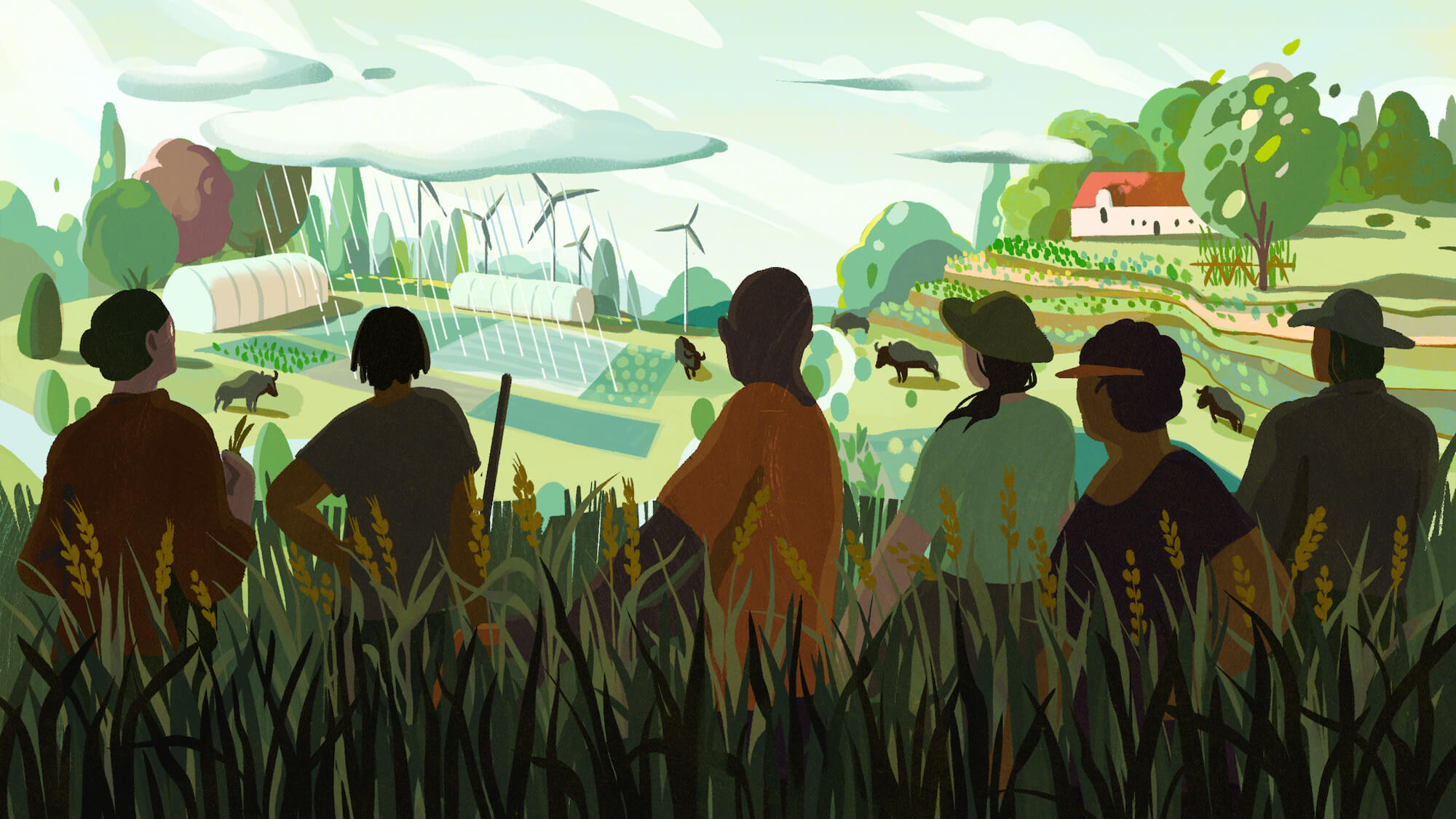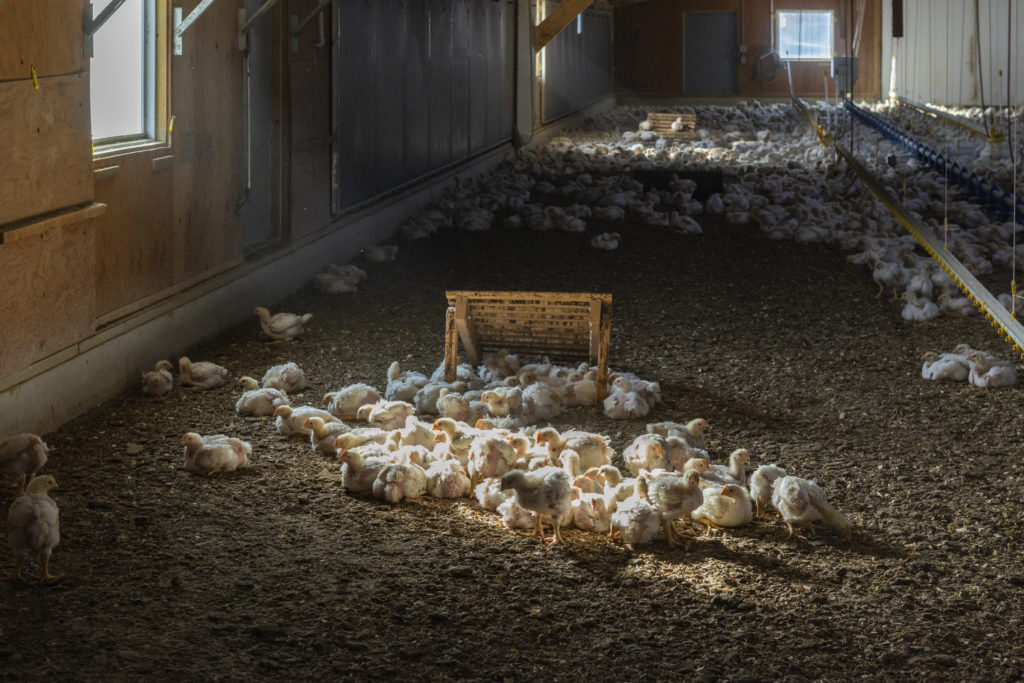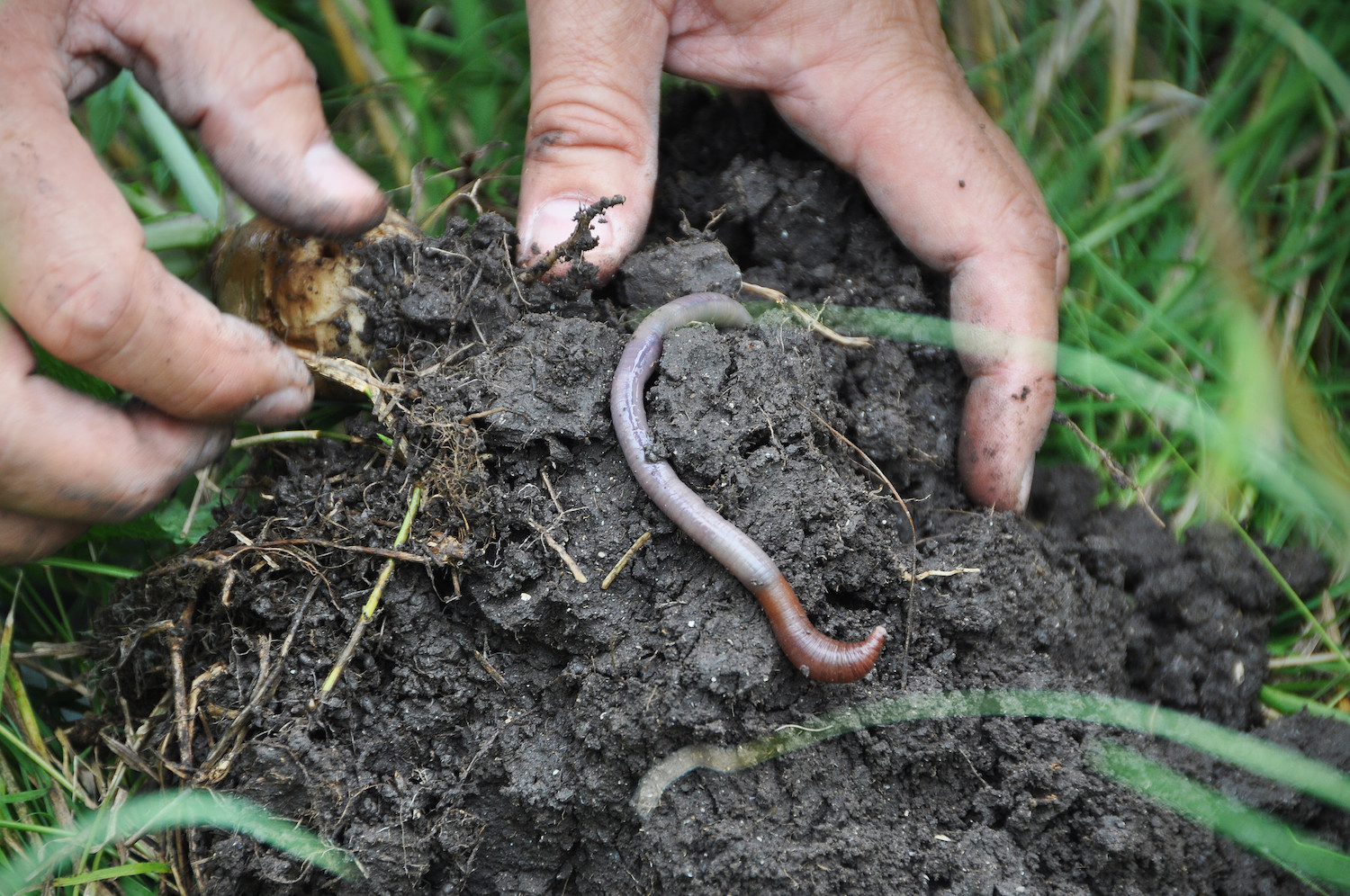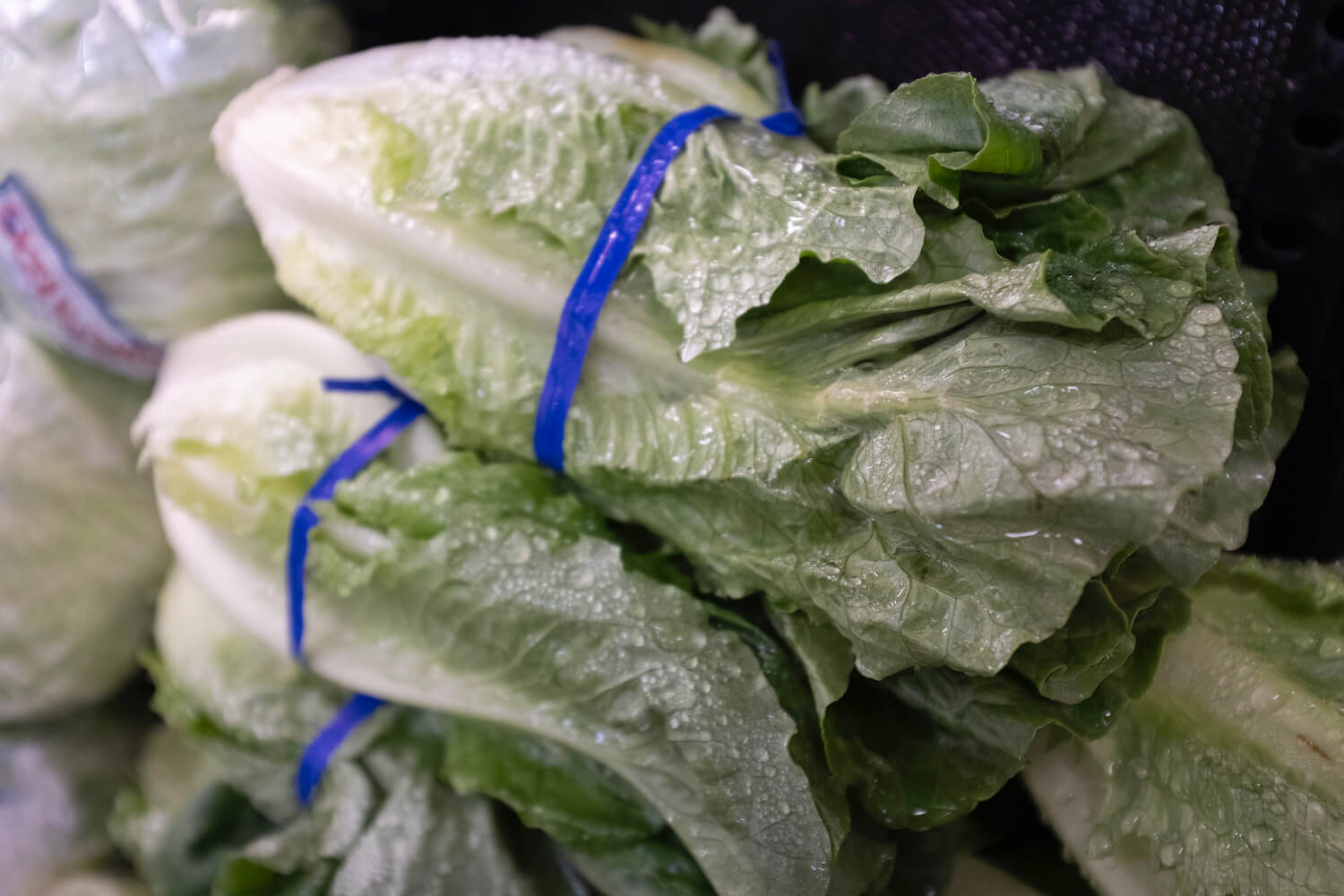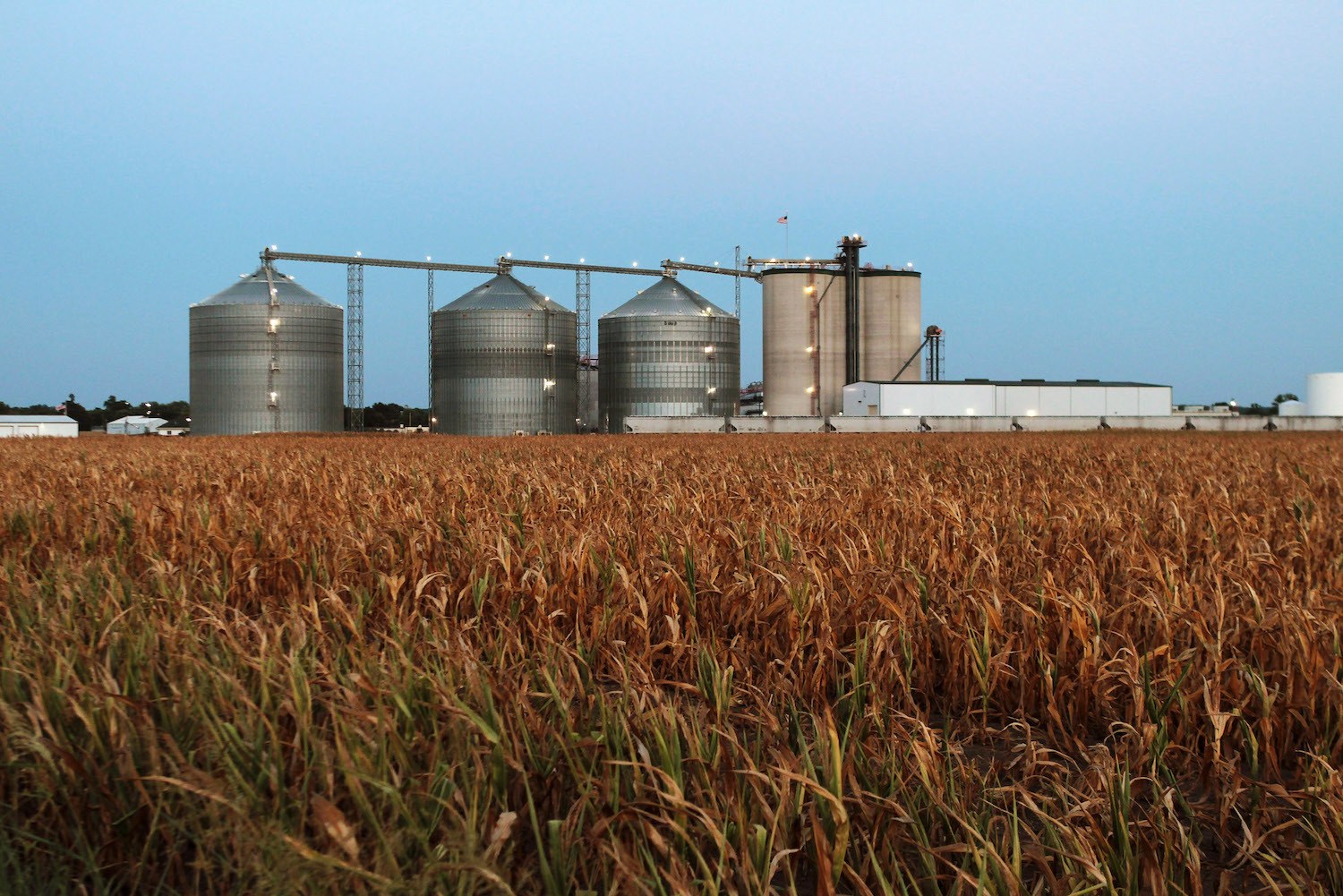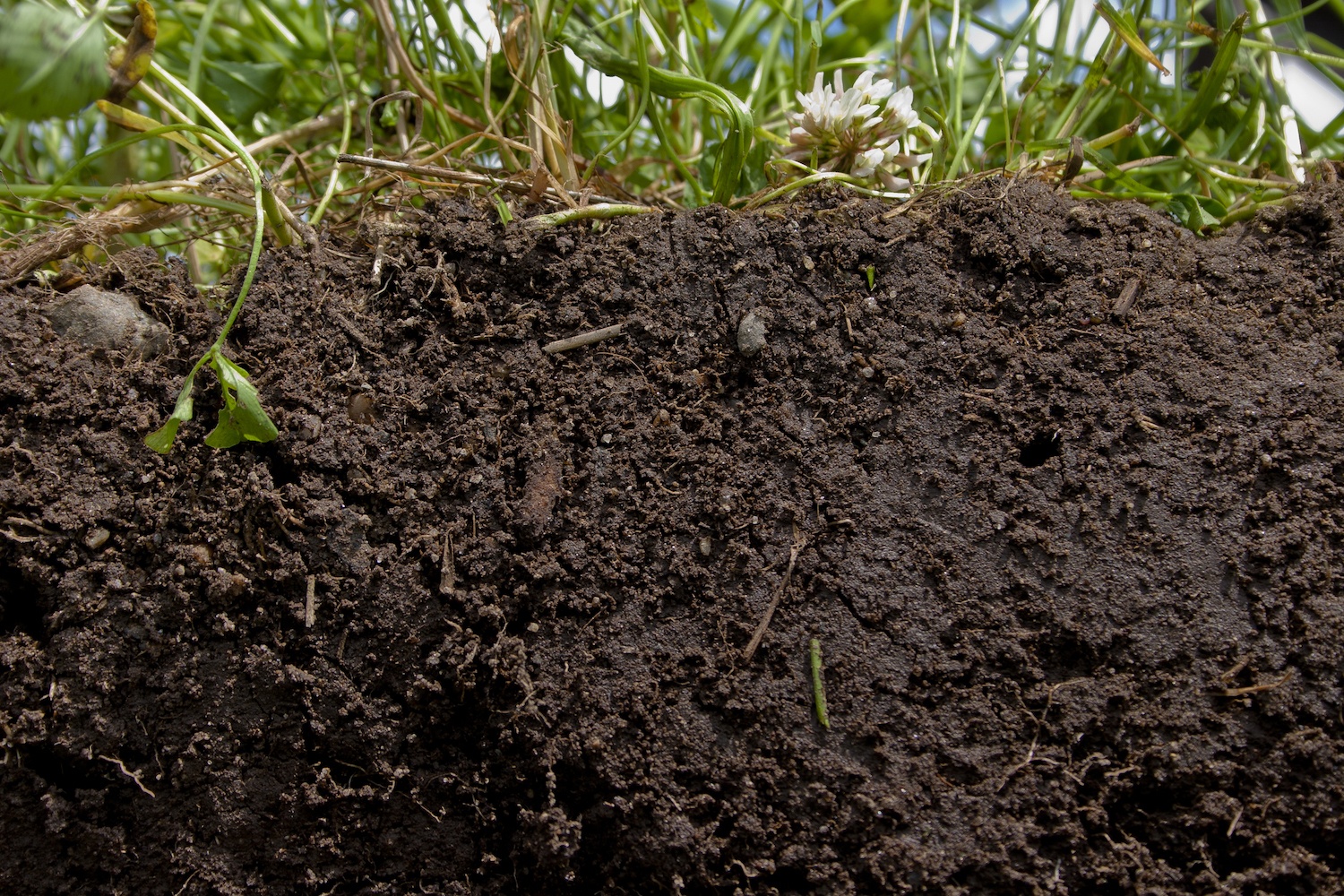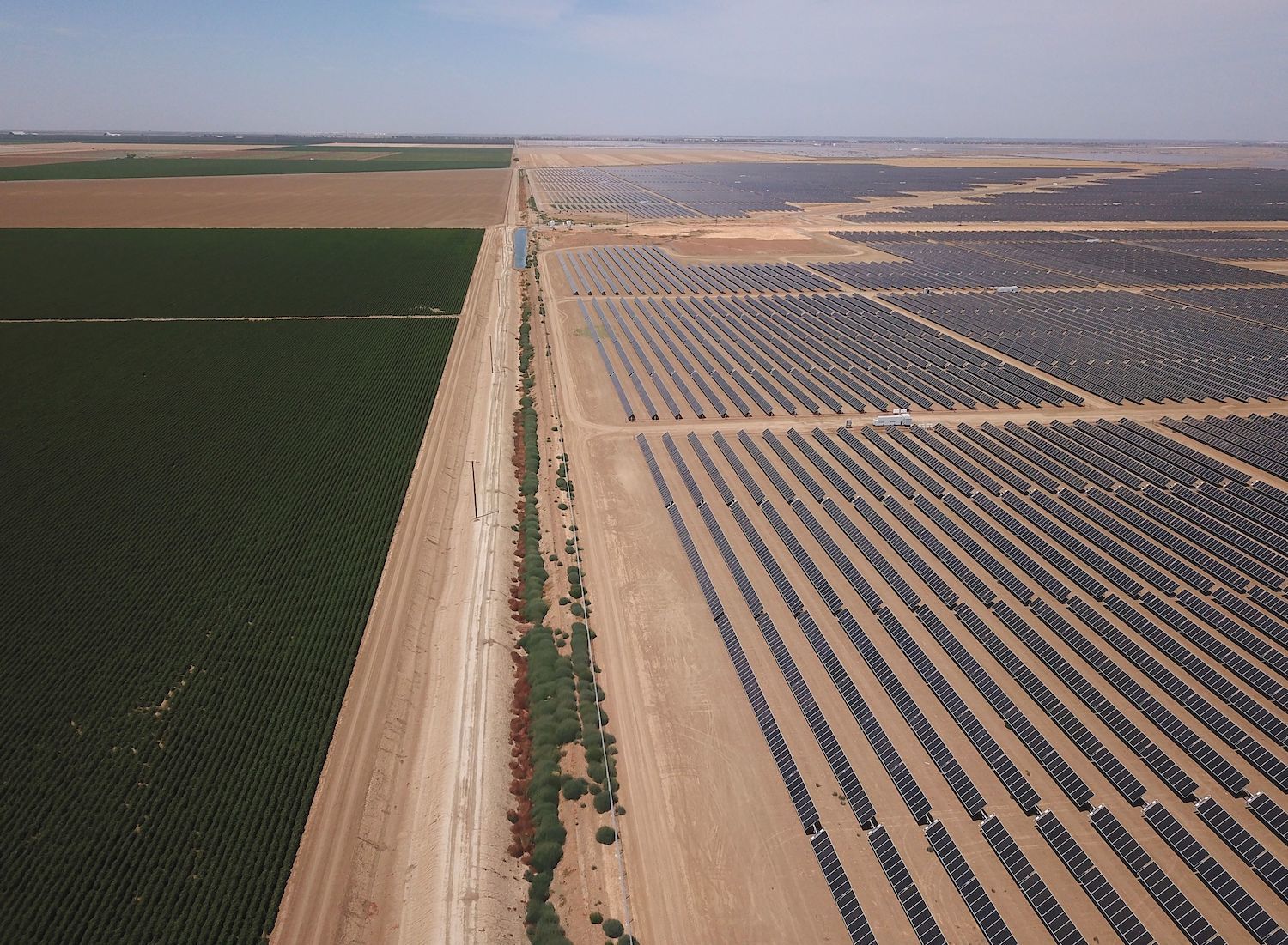
Robyn Beck / AFP / Getty Images
Farmers are giving up much-needed cropland to solar companies, but can the two work in tandem?
Back around 2011, Jonathan Cobb and his wife, Kaylyn, had what he calls a “simple game plan.” They’d take a few hundred acres of both leased and family-owned central-Texas farmland—land that for decades had grown row crops of corn and cotton—and give it “what it wants back,” he said.
What it wanted, in Cobb’s estimation, was a robust mix of tall native plants like silver bluestem and yellow Indian grass and Maximillian sunflowers to dig their roots deep into the heavy clay soil, which he believed would be “the fastest way to build carbon and resiliency into this place, along with water holding capacity, nutrient cycling—all things to have land that was by one definition regenerative.”
Eventually, the Cobbs would decide to bring in livestock to graze, mimicking herds of wild buffalo that once roamed these prairies and added nutrients with their manure, and voila: They had meat to market while restoring the earth, storing carbon, and keeping the land farmland.
At the time, Cobb and his Green Fields Farm were heralded by various sustainability-minded nonprofits as exemplars of regenerative farming—at its essence, a holistic set of interconnected growing practices related to building healthy, carbon-holding soil that can include cover cropping, eschewing tilling and pesticides and monocrops, applying compost, and planting windbreaks, all as a means to grow healthy food in a healthy environment. Cobb was also held up as proof that farmers, who are a notoriously change-averse group, could make a switch away from conventional, chemical-dependent commodity crops and still make a profit.
If commodity farmers can be convinced to make the transition, and the government to encourage regenerative practices with better incentives, the thinking goes, agriculture could act as a climate change solution instead of an exacerbator.
By one estimate, storing an extra 2 percent of carbon in soil would return atmospheric greenhouse gases to “safe” levels. If commodity farmers can be convinced to make the transition, and if the government can encourage regenerative practices with better incentives, the thinking goes, agriculture could act as a climate change solution instead of an exacerbator.
It sounds easy. It’s anything but. Adding a heavy dose of irony to the overall complexity of getting more acres farmed regeneratively is the fact that in some growing regions, this effort is being undermined by yet another critical climate solution: solar power. All around Cobb, land-owning neighbors are beginning to lease out their fertile farmland—not to farmers, but to solar companies, taking that land out of production at a time when more, not less, farmland is needed to grow our food.
—
Climate change, and, in some places, a burgeoning population, are creating a need to scale up food production at the same time that farmland is becoming ever more expensive; the act of growing food is also increasingly seen as a fiscally losing prospect. U.S. farmers unloaded 11 million acres of farmland for development between 2001 and 2016, according to American Farmland Trust (AFT), taking it out of production, potentially forever—never mind converting it to regenerative. Just weeks after the Intergovernmental Panel on Climate Change released its second climate assessment, in February, which pinpointed climate mitigating strategies that were having unintended negative effects, Cobb was feeling discouraged about his continued regenerative career prospects. Staying in business was costly and the fact that landowners in his region were leasing to solar seemed a harbinger of more trouble to come.
The challenges to farming, period—let alone transitioning to regenerative—can be high. Cobb experienced a steep learning curve and also had run-ins with relatives who were dead-set against changing their established farming methods, which led to a sibling land schism. Landowners Cobb leased from were similarly averse to mixing things up. “Their dad and grandpa spent their lives getting rid of all the weeds and they wanted [the land] to be black and plowed because that’s the way successful farming looks and feels,” Cobb said.
Some of the challenges can be impossible to plan for. In Petaluma, California—which is not currently experiencing a battle with solar—sheep and goat farmer Tamara Hicks bought foreclosed acreage that had once been a conventional dairy, intending to farm the land regeneratively. It was in a woeful state she calls “Breaking-Bad bad.” Methadone was found in some soil samples; refrigerators, trucks, tractors were “recycled” in pits dug into hillsides; manure ponds burbled near an estero; and 10,000 tires had been piled in a ravine to stabilize soil depleted and eroding from generations worth of poor grazing practices. At least some of that mess had to be cleaned up before Hicks could sow a native seed, purchase an ungulate, or figure out who to ask for technical support in applying for grants to plant trees and initiate other regenerative practices.
How to have it all
There’s zero doubt that clean energy sources, including solar, are essential to avoiding even more dire impacts of climate change, so the fact that in the U.S., utility-scale solar increased by 26 percent between 2019 and 2020 seems like a positive development. “We’re not going to meet our climate goals or get anywhere near without a ton of solar,” said Mitch Hunter, AFT’s research director.
In a similar vein, regenerative—a.k.a conservation—farming practices have been touted by international research nonprofits such as Project Drawdown as one corrective to agriculture as we’re currently practicing it, which releases 698 million metric tons of carbon dioxide equivalent per year in the U.S. alone, pollutes waterways, and poisons people and wildlife. Long-term, large-scale research is still necessary to quantify how effective regeneratively farmed land is at storing carbon. But smaller, shorter-term studies, and hundreds of years of accumulated experience of Indigenous regenerative farming practitioners—as well as newcomers like Cobb and Hicks—have shown rich, resilient soils that resist erosion during intensifying storms perform better in droughts and support biodiversity.
And yet, “It’s much simpler for a lot of farmers to just sign on the dotted line and get a paycheck for [leasing] their land for solar, compared with all the complexities of especially trying to farm regeneratively—that’s a major chasm that needs to be crossed,” Hunter said. “Texas is a leader but it’s happening everywhere, so we need to figure out, how do you thread the needle on doing solar in a way that’s good for farmers, good for the climate, and good for the land?” (The push-pull in Texas is also occurring between the solar industry and non-farmland—in one instance, as it concerns a pristine parcel of grassland environmentalists are trying to protect, as The Washington Post reported earlier this month.)
Hunter’s not alone in wondering how to have it all, climatically speaking. Germany recently passed legislation to open up agricultural land to solar in a way that allows for “parallel use of areas for food and energy production,” according to Clean Energy Wire. BloombergQuint reports that the government will support farmers in adding solar to 15 percent of their land, even though this combined use is more expensive than just solar alone. German ministers have also cited the importance of keeping agricultural land in production in order to maintain food security.
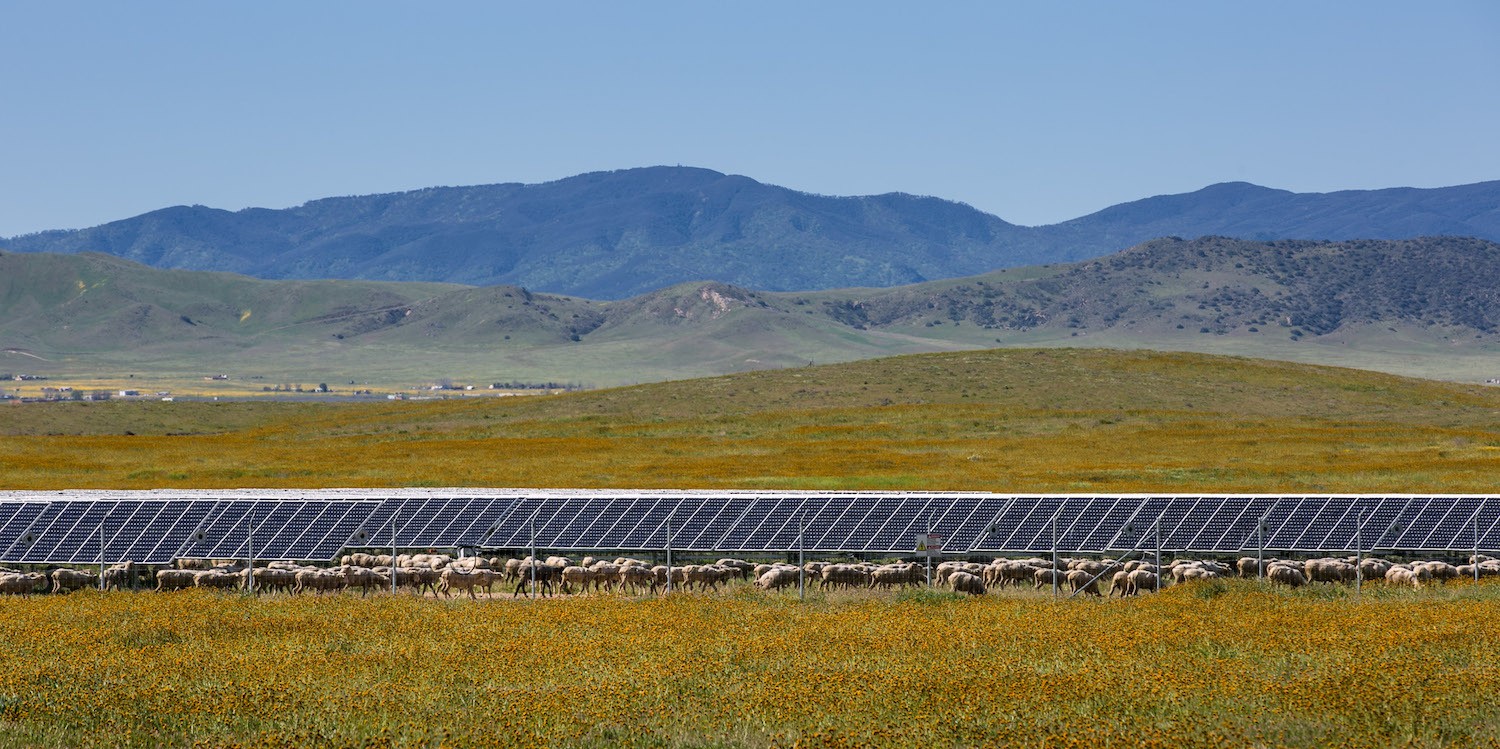
More basic agrivoltaics are being used across the U.S. in conjunction with sheep, which are lower-slung than cattle and therefore better able to graze in tandem with solar panels.
George Rose/Getty Images
Japan has been legislating around agrivoltaics—simply, solar panels that allow for some kind of ag-related use around and under them—since at least 2013, when it required what it calls “solar sharing,” in which solar projects set up on farmland must allow for various crop or livestock production. The country is also looking to use agrivoltaics as a potential way to get abandoned farmland back in production.
Here in the U.S., Hunter said that farm-based solar “is a space with a ton of possibility;” it can protect plants from too much sun and heat, it can lower water usage, it can increase yields. “But it’s just very early” in its development, with the biggest challenge to implementing it at scale being cost. Solar panels might sit too low to allow a farmer like Cobb’s tall native plants to grow, or to let his cattle meander beneath them, or to let agricultural machinery through, which is where the expense comes in. “Just getting those [agrivoltaic panels] off the ground takes more steel for the posts they sit on,” Hunter said, and more steel equals more money.
More basic agrivoltaics are being used across the U.S. in conjunction with sheep, which are lower-slung than cattle and therefore better able to graze in tandem with solar panels. But we still need what Hunter called “cutting-edge” systems that have moving panels to allow light to reach plants underneath, or that optimally manage rainfall so that it reaches the soil in the right spots—let alone accommodate cows. “We’re just still at a place where we have to identify economically efficient scalable models,” he said.
It is being studied, though. At the National Renewable Energy Laboratory (NREL) in Golden, Colorado, lead energy-water-land analyst Jordan Macknick is looking into what he called “opportunities for solar development that can benefit and provide value to agricultural land and soils.” NREL’s InSPIRE project, funded by the Department of Energy, is looking at the potential of agrivoltaics on crop, grazing, pollinator habitat, and greenhouse systems in 25 locations around the country—researching both the solar specifics each system requires and also how the panels affect things like soil moisture and erosion.
“A big obstacle for doing more regenerative farming is most people can’t afford to spend $30,000 on a seeder they only need once or twice a year.”
Still, Macknick agrees with Hunter that cost is a major barrier to getting such projects implemented, although some workarounds exist. Rather than raising solar panels to allow for the passage of livestock and equipment, “You can also just increase the distance between the rows of panels,” he said. “We’re really thinking about how do we design these systems with the farmers from the beginning, to make sure that there are sufficient walkways… and that you [think] about where will the irrigation infrastructure be… and that fences are not too close to the panels so you can’t turn a tractor around—small things that in the end can make a big difference on whether a farmer will say yes, I really want to do this, or no, this this will not be worth my time.”
It’s also important for the solar industry to think hard about how it can accommodate agrivoltaics. For some companies, agrivoltaics align with their overall mission to reduce carbon emissions and improve environmental conditions. For others, the fact that operating and maintenance costs can be lower when grazing sheep “mow” the plants growing around panels is a plus, since this translates into a financial incentive for the solar operator. Nevertheless, Macknick believes industrial row crops, which reside on a large portion of ag land that’s suited to solar, are, and will continue to be, a weak link when it comes to agrivoltaics—solar panels and giant combines make for poor companions. But smaller, regenerative farms are well suited to solar. To that end, “We try to incorporate practices and provide research that contributes to how can agrivoltaics can be a part of this broader regenerative agriculture movement,” Macknick said.
How to keep farmers farming the land until some sort of fortuitous balance between ag and solar can be worked out is a looming question. Once again, it mostly comes down to finance. “A big obstacle for doing more regenerative farming is most people can’t afford to spend $30,000 on a seeder they only need once or twice a year,” said Hicks. She sees sharing equipment, as well as finding knowledgeable mentors who can help save time and resources, as ways to make farming more affordable. Likewise, agricultural conservation easements from Marin Agricultural Land Trust (MALT) and AFT, which buy development rights from landowners (or in the case of AFT, provide the landowners with tax incentives to give up the right to develop) and extinguish them, to ensure that land is farmed in perpetuity; this gives farmers money to add value-added products to their operations, for example. With her MALT easement, Hicks built a creamery and expanded her barn.
Back in Texas, Cobb wasn’t sure how long he’d be able to continue working the land. Adding to his stress, his parents had been thinking about leasing out a portion of the family farmland. “They don’t want to do it but they’re on a fixed income,” said Cobb. “If they put 80 acres in solar, they can make $50,000 a year. But that would take 80 of my grazing acres away.” That loss would be bigger than it might appear on paper.
“A farmer who retires from farming, that’s a lot of knowledge that that one person holds that’s no longer available to agriculture, not to mention the [loss of] land,” said Hunter. “Theoretically, solar panels can be removed and you could farm [the land] again. But the knowledge, the community, the infrastructure if half of your neighbors sell out and now there’s nowhere to bring your product, well, that’s a big concern. We need to start talking very seriously about balancing the tradeoffs.”
